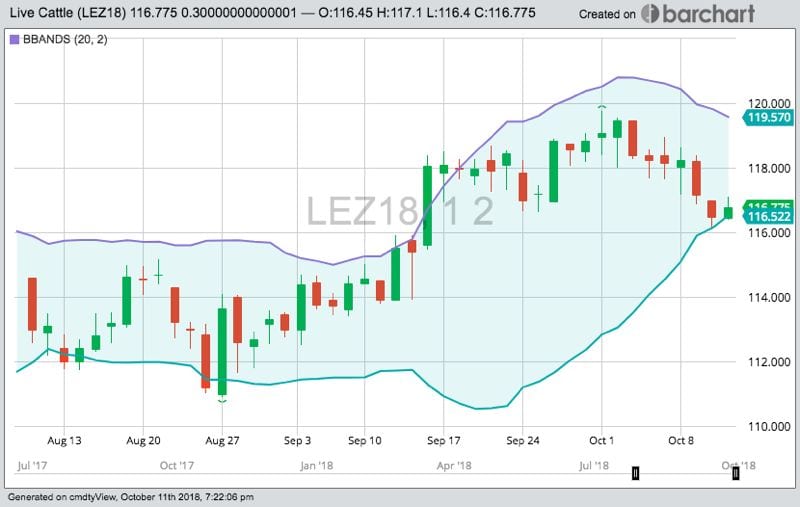Chicago | Reuters — U.S. cattle futures rose on Thursday after the U.S. Department of Agriculture trimmed its forecast for how much beef the nation will produce this year.
In a monthly supply and demand report, USDA pegged 2018 beef output at 26.9 billion pounds, down 0.6 per cent from its September estimate. The agency cited lower expectations for cattle slaughtering in the fourth quarter and lighter carcass weights.
“USDA cut their beef production forecast by 150 million pounds for 2018, suggesting a slightly firmer tone,” said Alan Brugler, president of U.S. commodity firm Brugler Marketing & Management.
Read Also

Alberta crop conditions improve: report
Varied precipitation and warm temperatures were generally beneficial for crop development across Alberta during the week ended July 8, according to the latest provincial crop report released July 11.
Most-active CME December live cattle rose 0.3 cent, to 116.775 cents/lb. (all figures US$).
CME November feeder cattle advanced 0.575 cent, to 156.75 cents/lb.
Fed cattle in Texas and Kansas traded at $111/cwt in the cash market, which was about steady with the last two weeks, according to traders.
In lean hog futures, contracts ended mostly lower, extending recent losses.
Thinly traded October hogs edged up 0.2 cent, to 68.675 cents/lb. CME December hogs, the most active contract, dropped 1.525 cent to settle at 54.425 cents/lb.
USDA lowered its forecast for pork production by 0.9 per cent from last month to 26.425 billion lbs.
The agency also reduced its estimates for U.S. corn and soy production in the report. Farmers are in the process of bringing the crops in from the fields.
The cut means there is less grain than previously expected available for animal feed, which may push some livestock producers to make deals to buy grain, said Don Roose, president of Iowa-based broker U.S. Commodities.
“The end user now is going to be more anxious,” Roose said. “The livestock guys are going to want to get covered in the upfront months.”
Still, the U.S. soybean crop was projected as the biggest ever, while corn harvest was pegged as the second-biggest on record.
— Tom Polansek reports on agriculture and commodities for Reuters from Chicago; additional reporting by Mark Weinraub.















